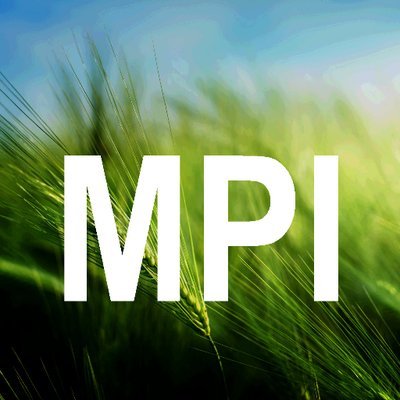Submission on Proposed Regional Plan for Northland
Introduction
- The Soil & Health Association of New Zealand Inc. (“Soil & Health”) is a charitable society registered under the Incorporated Societies Act 1908. It is the largest membership organization supporting organic food and farming in New Zealand and is one of the oldest organic organisations in the world, established in 1941. Soil & Health’s objectives are to promote sustainable organic agricultural practices and the principles of good health based on sound nutrition and the maxim: “Healthy soil, healthy food, healthy people”. Its membership is chiefly composed of home gardeners and consumers, organic farmers and growers, secondary producers, retailers and restaurateurs. Soil & Health publishes the bi-monthly ‘Organic NZ’ magazine – New Zealand’s leading organics magazine.
- Soil & Health makes this submission on the Proposed Regional Plan for Northland (“Proposed Plan”) requesting that it include policies and provisions relating to the management of genetically modified organisms (“GMOs”), as allowed under the Resource Management Act 1991 (“RMA”) and pursuant to the ruling in Federated Farmers of New Zealand v Northland Regional Council.
- Soil & Health further requests that amendments be made to the agrichemical section of the Proposed Plan to better protect people and the environment from the adverse effects of pesticides. A holistic approach to land and water use is required if land is to retain its productive capacity, and fresh water and marine habitats are to be restored. Agrichemical rules and policies must take special account of glyphosate use and other pesticide use in the region.
- Soil & Health wish to be heard in support of our submission.
- Significant gaps exist in the law around GMOs in New Zealand. In the Hazardous Substances and New Organisms Act 1996 (‘HSNO Act’) there are inadequate liability provisions (e.g. ‘polluter pays’) for any unintended or unforeseen adverse impacts resulting from the outdoor release of an approved GE crop or animal, meaning those causing harm may not be held liable. There is no mandatory requirement for the Environmental Protection Authority (‘EPA’) to take a precautionary approach to the outdoor use of GMOs.
- Due to these gaps in the law, the Inter-council Working Party on GMO Risk Evaluation and Management Options was establish and as a result a number of councils around New Zealand have been moving to protect their primary producers and communities by introducing precautionary or prohibitive policies. Auckland Council, Far North District Council and Whangarei District Council have all included provisions in their planning documents to regulate the outdoor use of genetically modified organisms. All three councils have prohibited the release of GMOs on land and made field trials a discretionary activity with performance standards in regards to liability and the posting of bonds. Auckland Council (as a Unitary Authority) has also prohibited the release of GMOs in the Coastal Marine Area (‘CMA’) and made field trials within the CMA a discretionary activity with performance standards in regards to liability and the posting of bonds.
- The Regional Policy Statement (‘RPS’) for Northland contains provisions relating to GMOs. These provisions are not yet operative. However, they are likely to require a precautionary approach to outdoor uses of GMOs.
- To maintain consistency with other member councils on the Inter-council Working Party and in anticipation of operative precautionary provisions in the RPS it is submitted that NRC should include provisions relating to GMOs in the CMA in its Proposed Regional Plan for Northland. These provisions should be the same (or similar) as those in the Auckland Unitary Plan to ensure a consistent approach across Northland and Auckland and eliminate cross boundary issues.
- Soil & Health was a party to Federated Farmers of New Zealand v Northland Regional Council.
- That decision ruled that local councils have the power under the RMA to control the use of GMOs via their regional planning instruments.
- That decision has recently been upheld by the High Court.
- Soil & Health therefore considers that there is jurisdiction for Northland Regional Council (‘NRC’) to make provision for objectives, policies, rules and other planning tools in relation to GMOs under the Proposed Plan.
- GMO proposals require approval from the EPA under the HSNO Act.
- The HSNO Act consenting process gives particular attention to the technical aspects of managing individual proposals. However, it does not involve:
- consideration of the geographic distribution of GMO projects;
- consideration of the need to geographically protect areas of particular value from GMO activities, such as sensitive farming practices (including organic farming, also all farming and forestry relying on a GE-free status, beekeeping etc.);
- consideration of the preferences of a community; or
- integration of the management of natural and physical resources, and the effects of GMO activities on natural and physical resources, on a geographic basis.
- The HSNO Act does not, therefore, provide a planning framework through which GMOs can be geographically, spatially or culturally managed in an integrated manner.
- The RMA establishes a regime whereby local authorities are called upon to prepare policy and plans to implement sustainable management on a geographic basis through the use of integrated management of natural and physical resources at a regional level, and integrated management of effects on the environment at a district level.
- Consideration of the location and distribution of proposals involving GMOs on a district basis, together with protection of rural resources for organic, biodynamic or GE-free farming, forestry, marine farming, beekeeping or other primary production, are important resource management matters for consideration by territorial authorities in carrying out their functions under the RMA.
- The outdoor use of GMOs has a potential to cause significant adverse effects on the environment. Adverse effects could include (inter alia):
- biological or ecosystem harm;
- harm to other existing or potential forms of land use including:
- organic farming (including organic certification and the requirement to be GMO free); and
- farming, forestry, beekeeping, marine farming and other primary production activities dependent on an uncontaminated environmental brand.
- GMOs have the potential to adversely affect ecological, economic, and resource management values, and the social and cultural wellbeing of people, communities and tangata whenua.
- Application of integrated management and a precautionary approach to GMOs under the RMA is the best available technique for managing the potential adverse effects posed by GMOs within the region.
- It is consistent with the sustainable management purpose and Part II of the RMA to establish regional plan provisions (e.g. issues, objectives, policies, rules and methods) that manage the release, location and management of GMOs where they have the potential to adversely affect the environment other land use activities.
- The decision Soil & Health seeks from NRC is that the Proposed Plan be amended to include the following:
- Strong precautionary, restrictive and/or prohibitive GMO provisions in the ‘Tangata whenua’ section of the Proposed Plan which address tangata whenua opposition to outdoor use of GMOs and/or their products and specific concerns about the risks of GMOs to indigenous biodiversity, and keeps with the wording in the RPS as relates to tangata whenua.
- To include GMO provisions in the ‘Coastal’ and ‘Coastal activities’ sections of the Proposed Plan that are the same as in the Auckland Unitary Plan, that being to adopt a precautionary approach to the management of GMOs by:
- prohibiting the outdoor release of a GMO in the Coastal space; and
- making outdoor field-testing a discretionary activity in the Coastal space; and
- including performance standards in regard to liability and the posting of bonds.
- To include GMO provisions in the ‘Land & water’ and the ‘Discharges to land and water’ sections of the Proposed Plan that avoids toxic discharges to land and water from GMOs, thereby avoiding transgenic contamination of soils and waterways and adverse impacts on GE-free primary producers. We note that the vectors for transgenic contamination include soils, seeds, pollen, insects, machinery, water, plus human error.
- To adopt a resource management framework for the management of GMOs that is regional specific taking into account environmental, economic and social well-being considerations.
- To address and support the Far North District Council, Whangarei District Council and Auckland Council’s opposition to outdoor use of GMOs.
- Soil & Health considers that it is important that there is consistency between the Auckland Unitary Plan and the Regional Plan for Northland, thereby eliminating cross boundary issues.
- Soil & Health is opposed to the use of harmful pesticides in Aotearoa New Zealand. As an organisation we advocate for farmers and growers to adopt natural, organic, non-harmful methods of pest and disease management. We believe that researchers, farmers and growers should be encouraged to develop and implement nonchemical alternatives to pesticides that foster soil microbial life instead of destroying it. Central and local government should promote and support farmers and growers to transition to more sustainable and environmentally friendly methods of farming and land use while also ensuring that regulations are in place to sufficiently protect people, communities and the environment from the adverse effects of pesticides.
- Numerous independent scientific studies have raised serious concerns about the effects that pesticides have on human health and the environment. There is a real risk of people living in rural communities, close to where commercial horticulture takes place, who may be exposed to spray drift. Young children are especially vulnerable as they often play outdoors and in the fields. Children at school can be subjected to pesticide exposures from nearby operations. A number of studies have linked exposure to pesticide drift to chronic conditions in children such as autism spectrum disorders and childhood acute lymphoblastic leukemia.
- Organic farmers and producers are also at risk. Environmental chemical pollution threatens the long-term viability of organic producers sourcing water for livestock and food production. Organic farmers become exposed when input quality cannot be assured. Water is the major input in agriculture.
- New Zealand currently applies an excessive amount of pesticides to soils. The Food and Agriculture Organization’s statistics database advises that in 2014 US$20,481,292.00 worth of pesticides were sold in New Zealand. This list doesn’t include hazardous pesticides like atrazine, which are sold here but are unauthorized in Europe. Herbicides accounted for nearly 50% of these sales.
- Of the many chemicals currently approved for use in New Zealand by the EPA of most concern is glyphosate, commonly known as Roundup. It is sprayed down most New Zealand roads, through our forestry plantations, and on most agricultural land.
- Glyphosate is a biocide meaning it has multiple pathways of toxicity. Glyphosate damages gut bacteria, beneficial species are vulnerable but pathogenic bacteria are resistant, it harms the immune system, has been demonstrated to impact serotonin production, is endocrine disrupting and neurotoxic. As a patented antibiotic, it may affect antibiotic resistance. Leaky gut syndrome is a particularly insidious and unpleasant consequence that is affecting increasing numbers of people.
- It is expected that the biggest users of glyphosate in New Zealand are forestry, agriculture, New Zealand Transport Agency and local councils. However the EPA doe not exactly know how much glyphosate is being used. In an Official Information Act release dated 16 June, an EPA Communications Advisor wrote: “We often get asked by journalists about the volume or extent of glyphosate use (which we can’t answer).”
- After more than 40 years of prolific global use, glyphosate was recently identified by the World Health Organisation’s International Agency for Research on Cancer as a ‘probable human carcinogen.’ Many countries are proactively applying the precautionary approach and are restricting, and in some cases completely banning, the use of glyphosate. These countries include the United Kingdom, most northern European countries, France, Spain, Canada, Colombia, Mexico, Sri Lanka, Bermuda and parts of the United States. Brazil and Argentina are likely to follow.
- In New Zealand some local governments are moving towards precautionary avoidance measures to transition away from the use of glyphosate-based herbicides. For example Christchurch City Council have recently proposed adopting a ban on glyphosate-based herbicides in built up areas in their draft Annual Plan. Tauranga City Council has also adopted measures to transition away from the use of glyphosate-based herbicides
- Soil & Health recognises that New Zealand freshwater is in a dire state, with a staggering 62% of monitored waterways being unsafe for swimming. A big factor in the pollution of waterways is from the increasing intensification of agriculture and namely nitrates from soluble nitrogen fertilisers as well as increased pesticide use, so simply fencing off and planting around streams cannot solve this issue. Healthier fresh water is achievable by ensuring stock numbers are sustainable, and by shifting to organic and biological fertilising practices that involve nitrogen-fixing pasture species, and healthy living soils with good moisture-holding capacity.
- Regional Councils have an obligation under the National Policy Statement for Freshwater Management to maintain and improve water quality however the same document fails to monitor synthetic organic compounds, and particularly, pesticides. The National Standards for freshwater lists only eight attributes for monitoring: cyanobacteria; Escherichia coli; dissolved oxygen; ammonia; nitrate; periphyton; total phosphorus; and total nitrogen. Avoiding greater contaminant monitoring permits a kind of ‘manufactured ignorance.’
- We do not have data to demonstrate how New Zealand aquatic environment responds to the chemicals that may cause adverse effects to invertebrates, fish species and other aquatic fauna. Toxic synergies from multiple chemicals are ignored.
- While our national freshwater policy does not require monitoring of agrichemicals in our waterways the most common pesticide, glyphosate and its toxic (and persistent) metabolite AMPA (aminomethylphosphinic acid), is not routinely monitored anywhere, not in freshwater, groundwater, or drinking water. Public health policy-makers might take note that glyphosate does not degrade quite as quickly as the claims made by regulators, indicate.
- Ensure that cultivation that is on land that is not certified organic becomes made a controlled activity requiring a 400m buffer for sensitive spray areas.
- Require that along with National Freshwater standards that are required SectionD.4.1- D4.4, that freshwater and sediment monitoring data (for the previous 5 years) for the following commonly used pesticide screens are required annually. If a freshwater body is identified as degraded, then require pesticide screens quarterly. Ensure this information is published and fully available online.
- Glyphosate and AMPA residues in freshwater and/or sediment
- Organonitrogen, Organophosphorus and Pesticides (ONOP) in Water and Soil.
- Multiresidue Pesticides (MR) in Water and Soil.
- Acidic Herbicides in Water and Soil
- Sulfonylureas (metsulfuron is widely applied on NZ roadsides)
- Semi-Volatile Organic Compounds (SVOC)
- Organochlorines
- Ensure that the data supplied to the NZ National Survey of Pesticides in Groundwater is publicly available. Ensure that the metabolites as well as the primary active ingredients are screened for.
- The notification period for neighbouring land owners before spraying be increased from 24 hours to 48 hours, at a minimum. The currently proposed 24 hour notification period is not sufficient to ensure that people and communities are protected from the adverse effects of agrichemical spraying, especially for spray sensitive areas.
- Any aerial spraying whatsoever should not be allowed as a permitted activity under the Proposed Plan. Due to the nature of application aerial spraying is virtually impossible to contain in order to ensure that spray drift or direct discharge to water does not occur – therefore it is impossible for aerial spraying to meet the permitted activity conditions of rule C.6.5.1.
- Soil & Health request that conditions be imposed to ensure agrichemical monitoring, including for air, freshwater and groundwater, takes place which is supported by evidence concerning children’s increased vulnerability to pesticides. Soil & Heath are skeptical of how and whether the permitted activity conditions will ever be enforced without any sufficient requirements for monitoring.
- In 2014 11 wells were sampled. Ensure that these wells correspond with regions where higher levels of pesticides may be being applied. Northland is detecting triazine herbicides in groundwater. Europe have banned these due to high mobility and leaching. OEHHA have recognised many triazine herbicides as reproductive toxicants.
Genetically Modified Organisms
Background
The Law
Integrated Management
Potential Adverse Effects of GMOs
Sustainable Management and Part II
Decision Sought regarding GMOs
Agrichemicals
Introduction
Gylphosate
Effects on water quality
Decision sought
List of pesticides:
Yours sincerely
Name: Mischa Davis
Position: Policy Advisor
The Soil & Health Association
PO Box 9693,
Marion Square,
Wellington, 6141
Email: advocacy@organicnz.org.nz
Website: www.organicnz.org.nz






